The difference between brand and direct response creative (with examples)
I get the whole "short and long" advertising stuff. But, practically, what does that actually look like? I needed examples.
It’s pretty well-established now that great brands run by smart marketers require a balance of creative that 1) generates future demand through emotive brand messaging and 2) captures existing demand through effective direct response creative.
My favourite analogy (and I have many) is that direct response is “fishing in a pond” and brand advertising is “making the pond bigger and filling it with fish”. Yes, your customers are the fish.
But what has always been less clear for me is what that actually looks like. What is the line between the two? When is an ad driving long term demand vs capturing it? What is the difference, really? I went looking for examples to demonstrate this split and found nothing. So I’ve pulled some examples from the internet to help me (and now you) identify when a brand is angling to create demand or capture it.
Brand Ads – creating future demand
Good brand advertising should create some kind of emotional response from whoever engages with it. It should make your brand more memorable, so that when someone enters the market in the future, they’re more likely to consider you ahead of your competitors. We invest in brand advertising to increase trust, preference and awareness. That is the game. The focus is usually on broad reach, meaning you’re reaching as many people as possible, so you typically find more brand creative on mass media channels like TV, radio, out-of-home or broad digital platforms for wide visibility.
What to look out for in brand creative:
Tends to be emotional, involve storytelling, and often visually striking.
Aims to create memorable brand associations.
Typically does not include a specific call-to-action.
Sometimes feature well-known people to encourage trust and recall.
Usually doesn’t include things like price or specific product details.
Good brand creative is fiercely protective of that emotional message. It’s important to fight the temptation to sell too hard or too directly. Remember, that’s not the goal here.
Example #1: Gousto
Why is it a brand ad?
It’s got some banging photography coupled with copy that makes you feel excited about cooking at home in the same way you might be excited about going out for dinner on Saturday. It’s a stretch, for me, but I get the point.
The copy rhymes, there’s some nice word play and the language is emotive. Very clear ad to show that cooking at home can be as fun, as tasty, as eating out on Saturday. No price, no button, no offer. Nicely done.
Example #2: Wilkinson Sword
Why is it a brand ad?
Copy-led creative is more often than not, brand creative. When someone reads something, you’ve already created some connection with them. This ad invites you to work out what it’s saying – “I’m smart, I want to find the punchline.”
The overall message here is to say that good enough isn’t quite good enough. Either you go for the very best in blades, or you may as well not shave at all. No price, no offer, no urgency. This is a brand ad.
Example 3: Yonder
Why is it a brand ad?
Okay, fine, I’m marking my own homework here but it is an example of brand creative. We deliberately didn’t include much product messaging in our out-of-home last year, and certainly didn’t want to include and pricing or offers. It’s just a message that positions Yonder as an alternative to our well-known competitor.
In one sentence, we’re saying that just having a rewards card with plenty of points doesn’t mean a great deal if you don’t ever use them. It’s like saying “we’re like them but better”. I’ll reserve judgement here but we know it was good because our competitor complained lol.
Example 4: Flora
Why is it a brand ad?
It doesn’t talk about the ingredients, the price or the benefits of plant-based butter. It just highlights that eating butter that’s been churned inside a cow is a bit weird. Which it is. It’s so simple and the whole point is to get you to have a think – and agree.
Example #5 - Vinterior
Why is it a brand ad?
Similar to the Yonder ad above (unsurprisingly, the work is done by the same agency), these Vinterior ads are taking a stab at their biggest competitors and not much else.
There’s no focus on the range of furniture (apart from a couple featured pieces), no pricing, no offers and no next call to action. Vinterior just want you to think that piecing together your own furniture is a bit shit.
Direct Response Ads – capturing existing demand
Effective direct response advertising should encourage whoever sees it to take an action, like click through to your website, fill out a form or make a purchase. It should be persuasive, insight-driven and address your potential customers concerns or questions to help make their next step as easy as possible. We invest in direct response advertising because it captures the existing demand for our product and drives short term growth for a business. Direct response creative is measured by it’s cost-per-acquisition and is typically seen more in performance-driven channels like Meta, Google and other platforms that help you test and iterate quickly.
What to look out for in direct response creative:
Tends to be rational, feature-driven, and persuasive.
Aims to drive an immediate action to click or buy
Copy tends to have less emphasis on emotion and more on product benefits.
Typically includes offers, discounts or bundle deals.
Will include things like price, comparison and other product details.
Good direct response creative is tested vigorously and focuses on driving great efficiency over time. It’s important to fight the temptation to “brandify” your direct response to a point that your ads lose efficiency. Remember, the goal is for these ads to convert effectively in that moment or very shortly after.
Example #1: Gousto
Why is it a direct response ad?
I thought it might be fun to show an example from the same brand. So here’s a Gousto ad designed to make someone sign up in that moment. It’s got the lot – huge offer, big savings, trust markers (100k customers, “your friend”…) and a big old button for you to click on. Textbook direct response. No notes.
You can clearly spot the difference between the two and how they’ve been employed at different stages of the funnel to accomplish different marketing goals. Smart bunch they are.
Example #2: Huel
Why is it a direct response ad?
When they’re not violating ASA guidelines, Huel are pretty good at their direct response advertising. Here’s an example. Lots of product, bit of urgency (“while stocks last”) with a nice little offer of a free Huel t-shirt to ward off any potential romantic partners.
Example #3: Percival
Why is it a direct response ad?
Percival have gone full product-spec on this ad, breaking down all the features of this raincoat and offering you 15% off to make your first purchase. Admittedly it’s more of a gentle approach to direct response, clearly Percival are careful about devaluing their brand by being too generous with pricing information and other offers, but it still counts here.
Example #4: Vinterior
Why is it a direct response ad?
Quite the departure from their underground brand campaign above, here Vinterior have added in Trustpilot trust markers, a very clear offer to save £30, and a nice call to action to sign up to their newsletter. No a meatball in sight.
Example #5: Apple
Why is it a direct response ad?
Known for their brand advertising, I thought it might be interesting to highlight how Apple capture demand. Here’s an example to encourage people to trade in their perfectly good phones for a more expensive one with a slightly better camera. Big call to action button in the middle, clear trade-in value and none of the cheeky Apple copy you see on their website – just a sentence clear as day on what they want you to do.



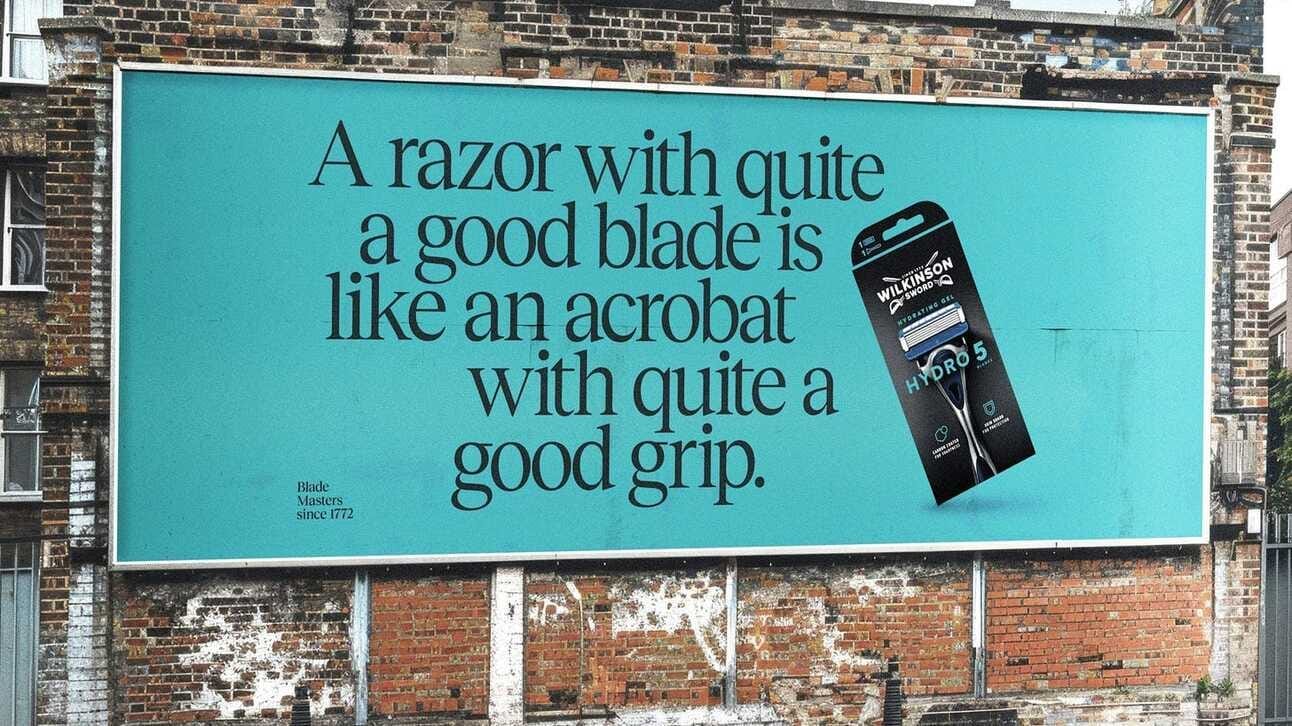
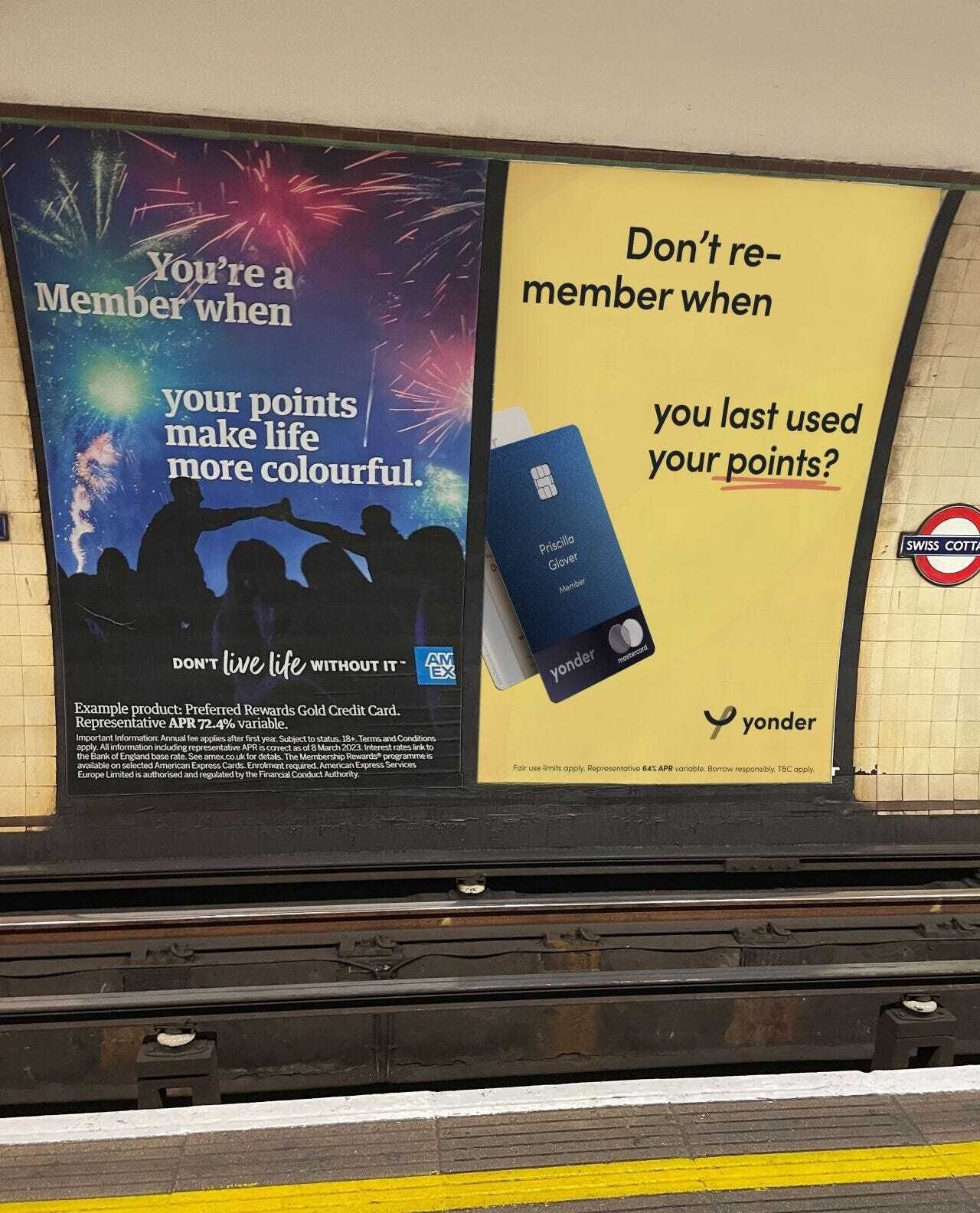
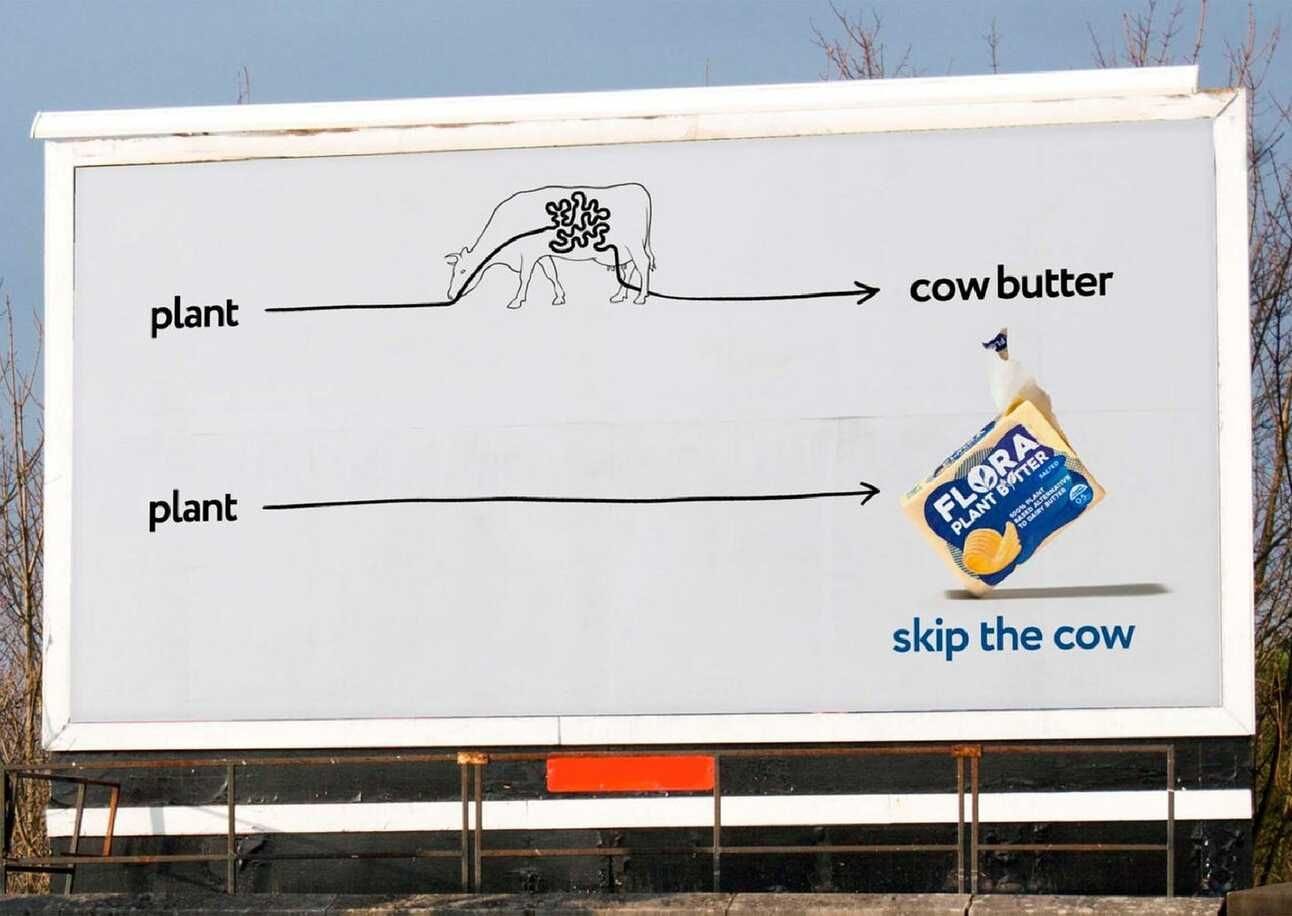
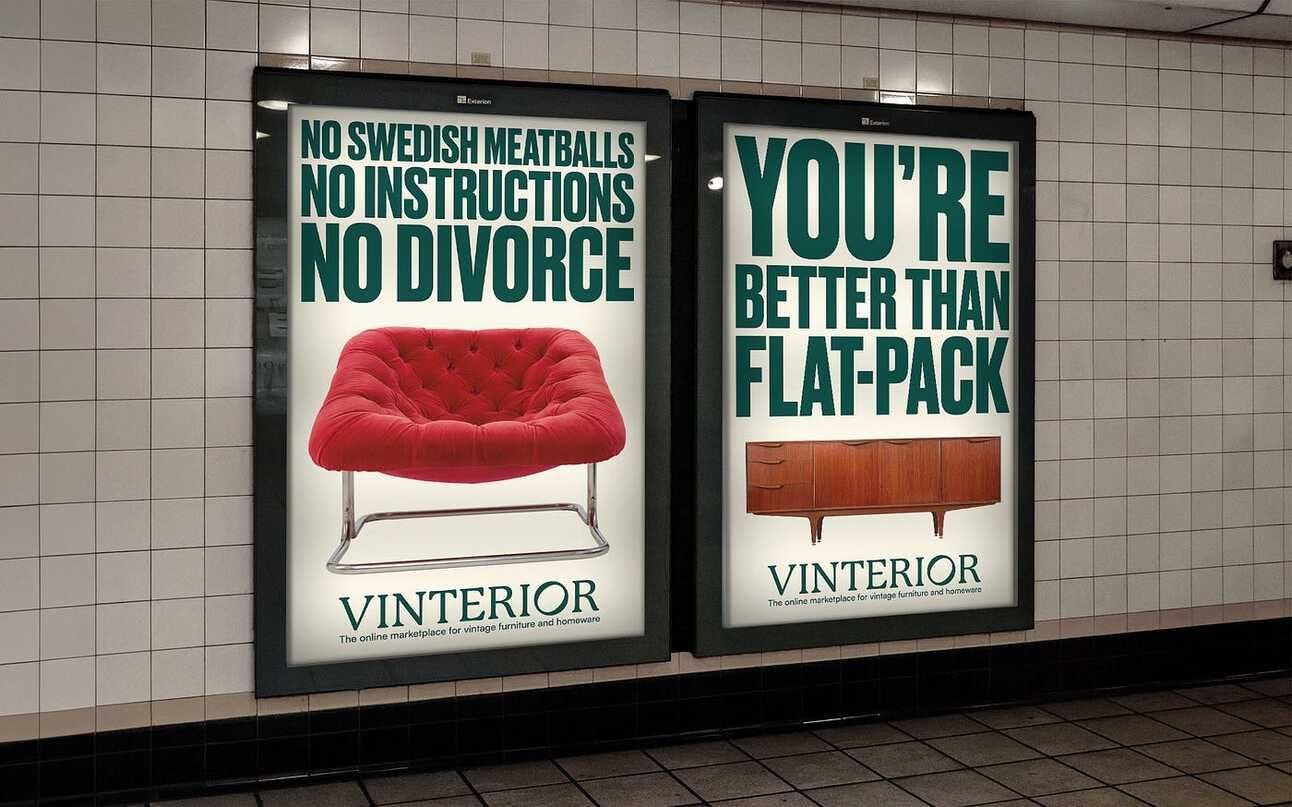

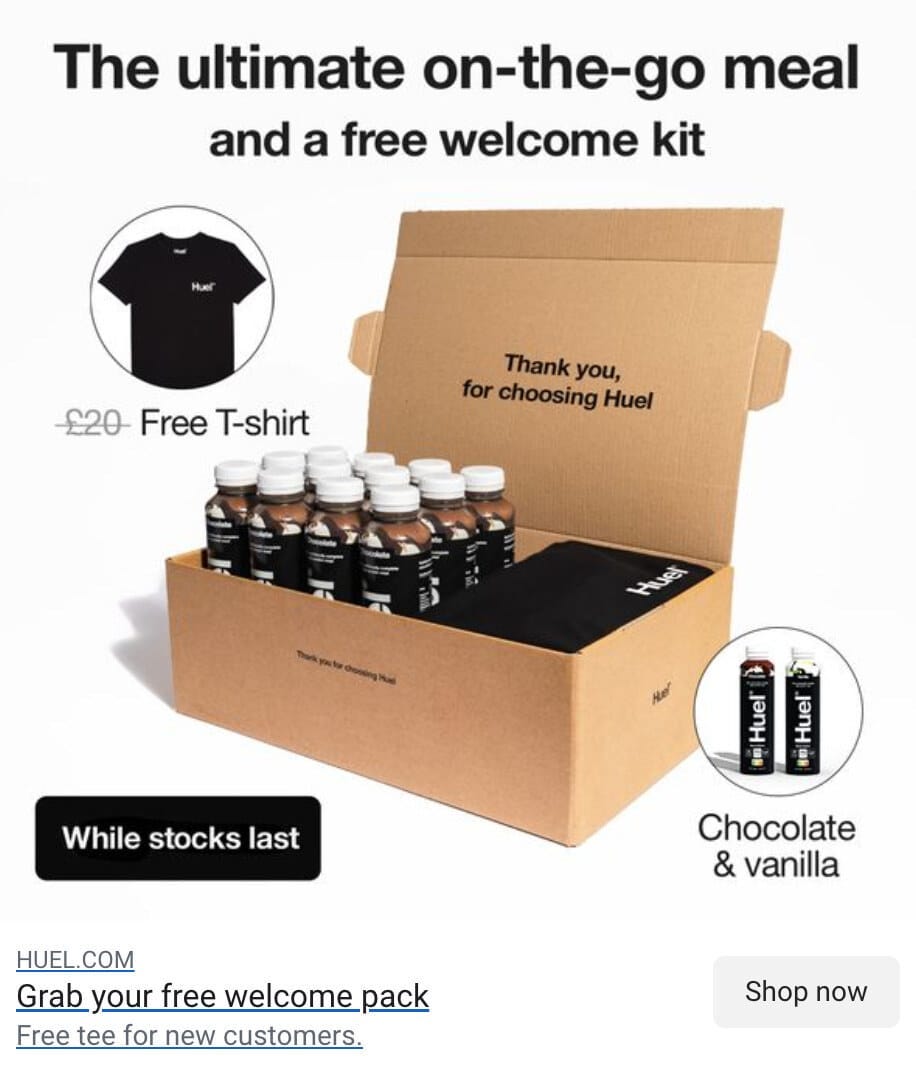
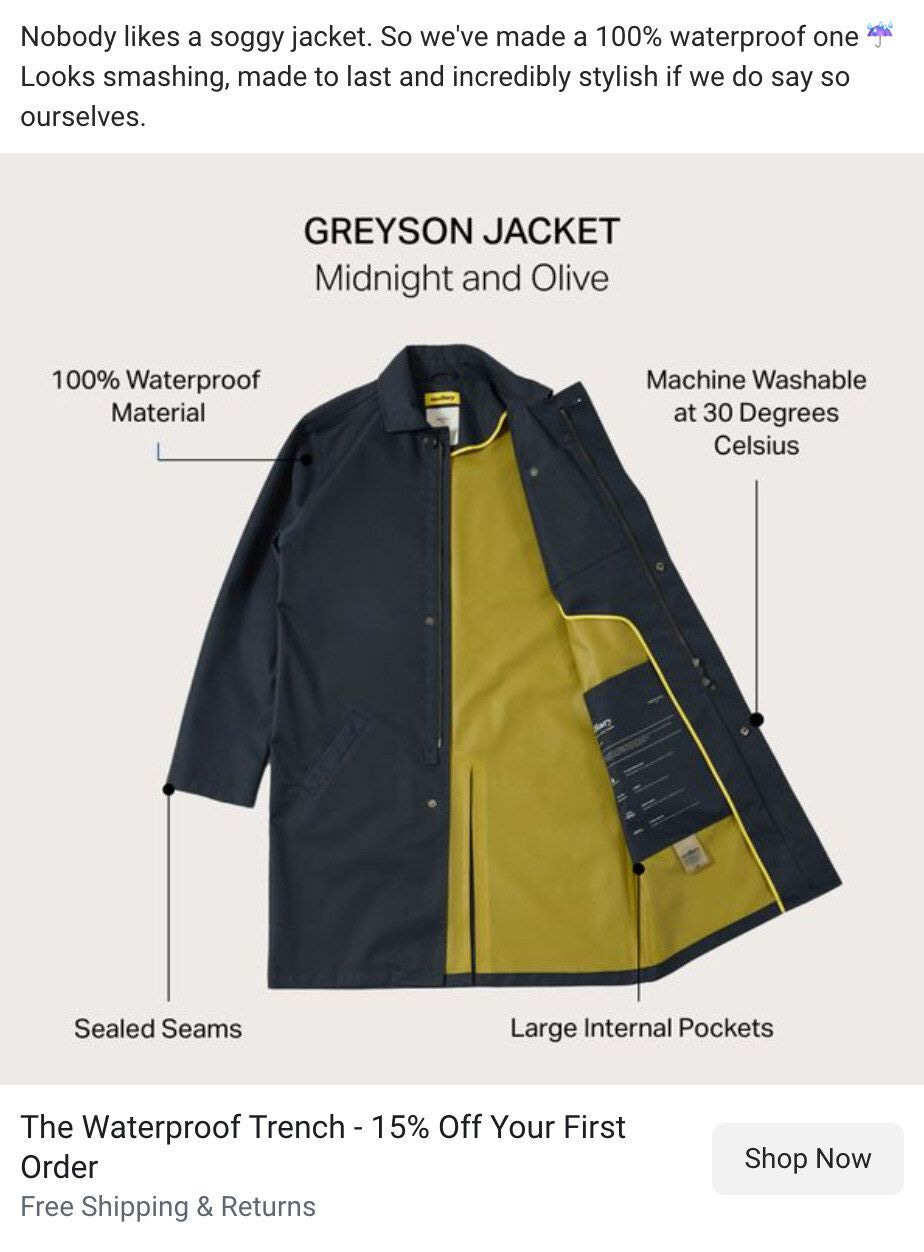
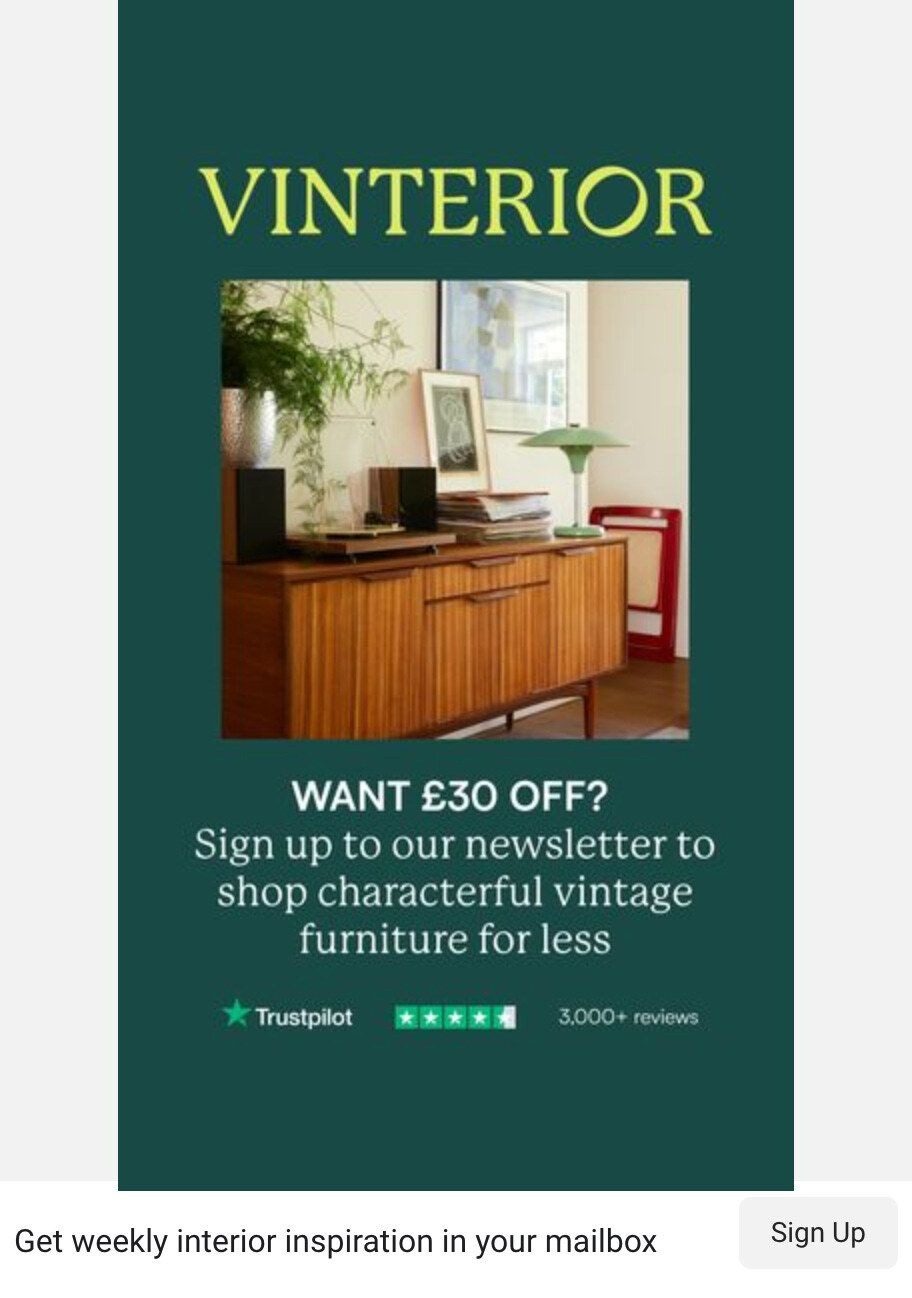
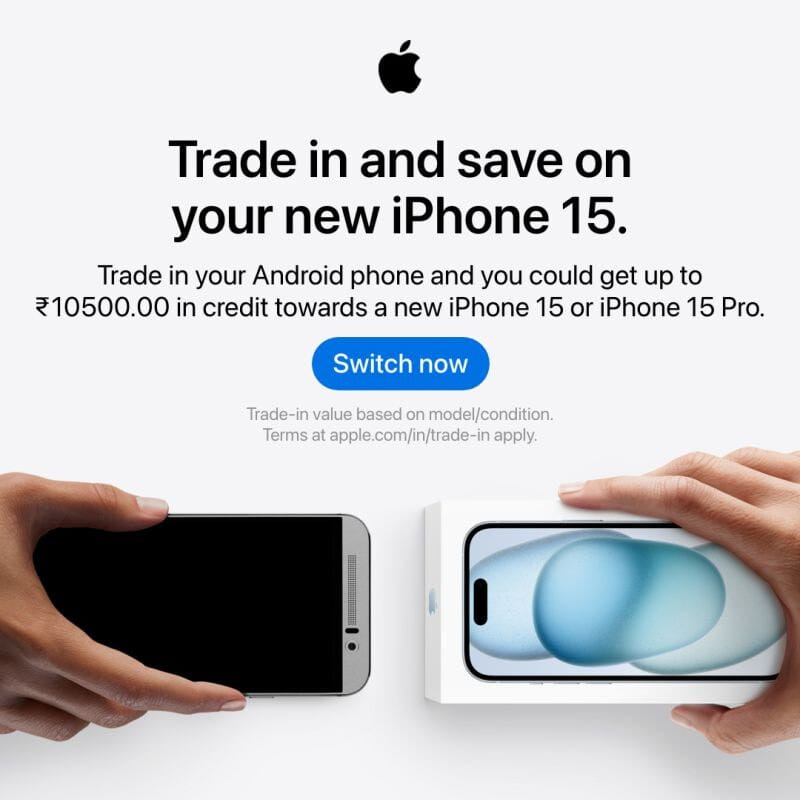
Super helpful breakdown. I wonder if there is any accepted wisdom on what proportion of budget of should go on each? Or does it just depend completely on the company and stage.